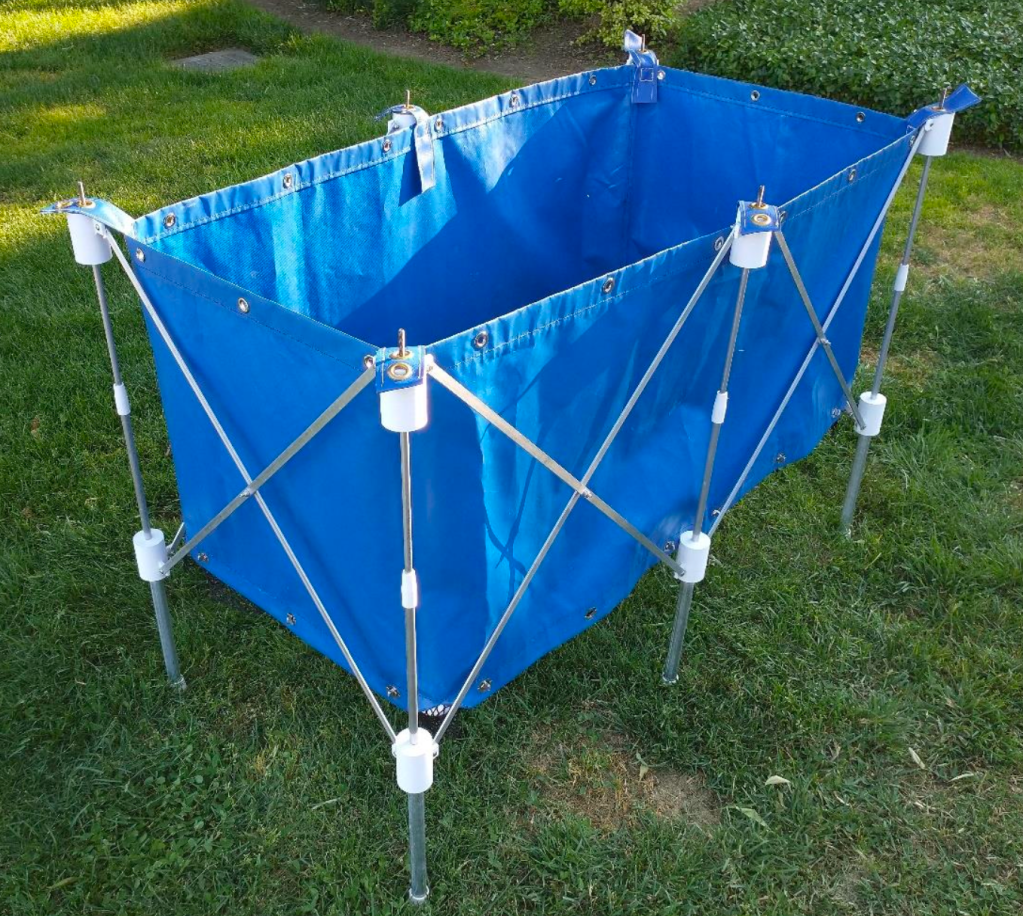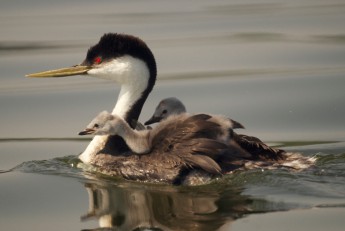Reliable, portable equipment is one of the pillars of oiled wildlife response. Veterans of the oiled wildlife field will tell you about their favorite, albeit devastatingly discontinued, rinse nozzle. They’ll show it to you, maybe even let you hold it, but ask to borrow it and their ice-cold glare will send shivers down your spine! We can be protective over our favorite tools. Sometimes our favorite piece of equipment is a high value item like an ancient centrifuge that, despite years of abuse, still gets the job done better than any new model. Sometimes that favored item is purely for convenience or comfort, like that pen. Ah, you know the one. Just the perfect ink flow, thickness, and it never smudges or skips. You’re in an exclusive relationship with this pen. Its home is in your pocket and losing it would mean a frantic search until—ah ha! You snatch it from your coworker’s grasp. They foolishly didn’t realize the pen was spoken for, but you educate them. And now you’re reunited with your inky beloved and… okay, let’s get back on track.
The point is, we find the supplies that work and we hang on tight! An oiled wildlife response facility is a fast-paced and often chaotic environment. Selecting the most efficient and dependable equipment ultimately saves us valuable time which translates to better outcomes for our wild patients. If having a favorite pen gets you through your shift smoother and with clearer handwriting—more power to you. But this blog is about a different sort of pen. An oil spill response classic. The tried and true. The soft-sided pen.

The soft-sided pen is an enclosure designed specifically for seabirds. It’s been through several iterations and many seabird focused organizations have put their own spin on it. Regardless of the individual customizations from various designers, the basic features of a soft-sided seabird pen are the same:
| Feature | Benefit |
| Soft-sided | This material protects delicate wings from injury when a frightened bird flaps against them. |
| Net-bottom | Seabirds are typically fish-eaters. That diet can be problematic for maintaining the waterproofing of their feathers. Fish oil and the birds’ own droppings can fall through the net-bottom, which beneficially limits the amount of contaminant in contact with the birds’ feathers. The net also helps distribute the birds’ bodyweight, lessening the detrimental effects of being housed on land vs. in the water during their recovery. |
| Portability | The enclosure needs to be transported to or easily stored at the primary care facility where the rehabilitation of oiled wildlife is taking place. |
| Easily disinfected | Nonporous materials can be disinfected for the biosecurity of our facility. |
The OWCN has been working with the same soft-sided pen design for the last 15 years. It has performed well and we have used hundreds of them through the years. But is it a perfect design without need for improvement? No. While the current soft-sided pen design has met our needs, we have identified some areas for potential improvement.
| Feature | Needs Improvement |
| Materials | The current frame material is PVC. PVC is heavy and the fittings often break during disassembly of the pen. |
| Weight | The current design is 25 pounds and rather bulky. |
| Assembly time | The current design gets broken down into 52 parts and takes about 30 minutes to assemble. |
What are we looking for in a new design?
We’d like a new design that is lighter and will take less time to assemble. Easier said than done! Fortunately, UC Davis, the home of the OWCN, is a land of many opportunities. One such opportunity comes in the form of our relationship with the Mechanical and Aerospace Engineering Capstone Program. Teams of senior engineering students are paired with a local sponsor to produce a design that solves a complex engineering challenge. Since 2020, the OWCN has sponsored 8 of these senior capstone team projects. Thinking we had a good match for the program with our seabird enclosure dilemma, we submitted our project proposal and were matched with a student team earlier this year. Throughout the semester, I met with students Matthew Featherstone, Yuejun Fu, Miguel Gomez-Sanabria, Bryant Huynh, Mursal Wardak, and Marllon Zavala as they tested and problem-solved their way through the design process. The students’ work included detailed risk analyses, manufacturing drawings, assembly and fabrication instructions, a user’s manual, and best of all—a working prototype!

For anyone reading this who has had the pleasure of assembling the previous soft-sided pen design, you may want to take a seat before you watch the assembly of the new design below…
Thanks to the ingenuity of our industrious engineering team, the assembly time on the soft-sided pen has been reduced by approximately two-thirds! WOW!
Once the pen’s major parts have been manufactured, the pen is kept in a collapsed state—ready to be quickly expanded and set up within 10 minutes for use during a response. This is thanks in large part to its new collapsible aluminum frame with 3D printed joints. We asked our design team to source materials that could either be purchased in a local store, 3D printed, or harvested from the older soft-sided pen design. The team incorporated the net-bottom frame and marine fabric from the older design and used new, lightweight materials for the rest.

Overall, the new design is lighter, takes a third of the time to assemble, and has fewer parts to worry about. We maintained the general dimensions and ergonomic height of the enclosure from the older design.

Additional features of the new design include:
- Removable legs to drop the enclosure to shorter height with a solid floor
- Optional wheels for portability around the facility
- Optional divider to separate the occupants or create a more confined space
What’s next for this design prototype?
Innovative projects like this are one of the most exciting parts of my job at the Oiled Wildlife Care Network. We are always seeking new and better ways to achieve our mission of providing the best-achievable capture and care for oil-affected wildlife. In this case, our new prototype has a lot of real-world testing to go through to ensure that it meets our high standards for safety and animal care. I look forward to sharing updates on that process in 2023. In the meantime, if you find yourself in the Primary Care Facility at an OWCN spill response, keep an eye out for my new favorite pen. This one is too good not to share.
I’d like to extend a HUGE thank you to our team of engineering students: Matthew Featherstone, Yuejun Fu, Miguel Gomez-Sanabria, Bryant Huynh, Mursal Wardak, and Marllon Zavala. Best wishes to you on your post-graduation journeys!
—Sam
